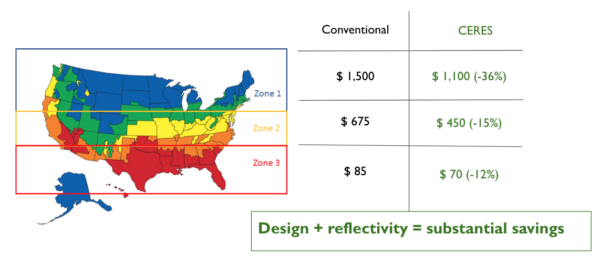The benefit of growing in a greenhouse, rather than growing indoors, is the ability to utilize free energy from the sun. The sun’s energy is more powerful and effective than any artificial light available. The downside is it’s not consistent. Sunlight intensity will fluctuate depending on a multitude of factors, so commercial greenhouse growers depend on supplemental lighting in the winter to ensure that their plants get enough light for their specific growth stage.
Because supplemental lighting is an inevitable part of greenhouse production, we will be featuring a series of blogs about greenhouse lighting – starting with a blog about how greenhouse design influences your usage of supplemental lighting. This blog series will “shed some light” on ways that you can improve plant health and yield while simultaneously saving on energy costs.
The amount of supplemental light used depends on a greenhouse’s capability to capture natural sunlight. Design elements like roof angle, greenhouse orientation or building material will influence the amount of light levels in a grow environment at any time of the year. And furthermore, these design elements will determine your reliance on supplemental lighting. In this blog, we will explain how passive solar greenhouse design can save you on lighting costs while increasing yields.
Energy-Efficient Design
Traditional greenhouses are designed with a center gable to let light in from all angles. Their entire roof, and oftentimes walls, are made of a glazing material like glass or polycarbonate. While this design is tried and true for allowing sunlight into the greenhouse, it also allows a lot of sunlight to escape the growing environment – especially when the sun is lower in the sky. A passive solar greenhouse, on the other hand, is built with an off-center gable roof, a solid and reflective north end wall, and is oriented east/west to maximize solar gain. More solar gain means less of a need for supplemental lighting and therefore lower electrical costs.
From the render below you will see the north and east walls (west wall not pictured), and north-facing roof, of our patent design, are insulated metal panels, or IMPs, that help to keep light and heat in the greenhouse. The white coating on the interior of our IMPs reflects the sun’s rays back onto the plants creating a diffusion effect. We call this sun harvesting.
 The diffused light that is reflected off the solid end walls helps to compensate for the shading in your grow environment. When light bounces off the coated IMPs, it is reflected in different directions, hitting the plants at various angles. This allows your plants to grow more full.
The diffused light that is reflected off the solid end walls helps to compensate for the shading in your grow environment. When light bounces off the coated IMPs, it is reflected in different directions, hitting the plants at various angles. This allows your plants to grow more full.
Lighting Efficiency
High light transmission coupled with active sun harvesting means our growers are achieving 50-80% more sunlight in the winter than a traditional greenhouse. And the light levels that you can achieve in a Ceres greenhouse with just natural sunlight can be approximately four to ten times higher than artificial lighting (depending on the crop and the time during the year).
More sunlight means higher yields; plus it means less reliance on supplemental lighting in the winter or when the sky is overcast.
Lighting Cost Comparison
Below is a comparison graph showing artificial lighting costs of a Ceres greenhouse and a traditional greenhouse in the winter. The cost is electricity consumption for lighting for one year. As you can see Ceres’ design has a lower lighting cost in all three geographical zones.
The farther north you are the higher the savings, because of the reflection from the inside coated north wall. As you can see in the table, the savings for a 1,000 sq.ft. greenhouse growing lettuce can vary from 36% in Zone One (northern US) to 12% in Zone three (southern US).

Lighting Support
Ceres also offers analytical support to make sure you are maximizing lighting efficiency in your greenhouse. By collecting real time data from your light sensors, we are able to give you strategic feedback on runtime schedules and recommended light intensity levels for different times of the day and year.
And if you’re not sure what type of supplemental lighting you should use to optimize plant growth in your greenhouse, our greenhouse designers will work with you to come up with a solution that fits your growing goals. We will discuss the differences between different lighting solutions in part 2 of our lighting series.
If you have any questions about our sun harvesting greenhouse technology or if you have any general greenhouse lighting questions, contact us! A greenhouse expert is waiting to hear from you.